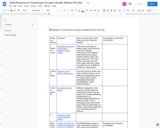
Running List of Resources for Selecting Culturally-Relevant Texts
- Subject:
- Environmental Literacy and Sustainability
- Material Type:
- Learning Task
- Author:
- Sandy Benton
- Date Added:
- 02/15/2022

Running List of Resources for Selecting Culturally-Relevant Texts
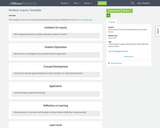
This template uses the an inquiry-based approach to learning modified from the BEETLES Learning Cycle.
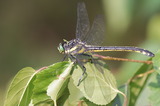
This series of 5 high-quality, standards-aligned, inquiry-based activities and one STEM challenge have been field-tested by secong grade students and families of Wequiock Children's Center for Environmental Science during Safer At Home orders. These activities encourage students to use natural areas around their homes and in their neigbhorhoods as they improve their science and engineering skils relating to plant and animals interdependence. Created as a part of a WISELearn OER Innovation project, Connect, Explore, and Engage: Using the Environment as the Context for Science Learning was a collaboration of the Wequiock Children's Center for Environmental Science and the Wisconsin Green Schools Network. One of the goals of the project was to create standards-aligned lessons that utilize the outdoor spaces of the school (as well as those of the students' homes). These lessons were created to take place during the spring. However, some of the lessons could be conducted during the fall. Cut flowers from a florist may be used in place of ones found living outdoors.The title image was used with permission and is courtesy of Joe Riederer. The observation protocol "I Notice, I Wonder, It Reminds Me Of, I Think Maybe" has been adapted from that of the BEETLES Project.

Context: Our Ancient Roots Homestead collaborates with students, elders, and community members in the surrounding Tribal Nations— both Menominee and Stockbridge Munsee. We recognize all students learning in different ways. Some students join us in person, while others join us virtually. People are invited to tell stories, garden, preserve food, make music, create art, and learn different Indigenous life skills. The culturally-relevant text sets offer different perspectives for students to see as well as wonderful conversation starters. Students learn of different careers within the Indigenous World. Some of those careers being: Seed Keepers, Gardeners, Knowledge Keepers, Storytellers and more! Dig your bare feet into the soil and feel those connections to your ancestors, the land, the plants, animals, and all things. We are all connected. Let’s work together and connect our past to the present for the future… of learning!
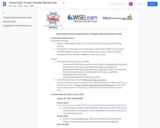
Handout for Advancing Environmental Literacy through Culturally-Relevant Texts
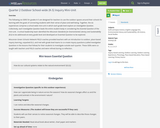
The following six OERS for grades K-5 are designed for teachers to use the outdoor spaces around their schools for learning with the goals of connecting students with their sense of place and well-being. Together, the six experiences comprise a school-wide mini-unit in which each grade level explore an Investigative Question. Collectively, each Investigative Question leads the entire student body in considering the Essential Question of the mini-unit. A school leadership team identified the Wisconsin Standards for Environmental Literacy and Sustainability (ELS) to be addressed at every grade level and developed an Essential Question to be explored.Wisconsin Green Schools Network FIELD coaches provided teachers with an introduction to outdoor, place-based inquiry learning, unpacked ELS, and met with grade level teams to co-create inquiry questions (called Investigative Questions in the lessons that follow) for their students to investigate outside each quarter. These OERs were co-taught with teachers and FIELD coaches and were refined during co-reflection.
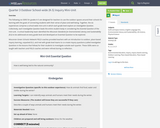
The following six OERS for grades K-5 are designed for teachers to use the outdoor spaces around their schools for learning with the goals of connecting students with their sense of place and well-being. Together, the six experiences comprise a school-wide mini-unit in which each grade level explore an Investigative Question. Collectively, each Investigative Question leads the entire student body in considering the Essential Question of the mini-unit. A school leadership team identified the Wisconsin Standards for Environmental Literacy and Sustainability (ELS) to be addressed at every grade level and developed an Essential Question to be explored.Wisconsin Green Schools Network FIELD coaches provided teachers with an introduction to outdoor, place-based inquiry learning, unpacked ELS, and met with grade level teams to co-create inquiry questions (called Investigative Questions in the lessons that follow) for their students to investigate outside each quarter. These OERs were co-taught with teachers and FIELD coaches and were refined during co-reflection.
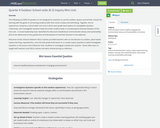
The following six OERS for grades K-5 are designed for teachers to use the outdoor spaces around their schools for learning with the goals of connecting students with their sense of place and well-being. Together, the six experiences comprise a school-wide mini-unit in which each grade level explore an Investigative Question. Collectively, each Investigative Question leads the entire student body in considering the Essential Question of the mini-unit. A school leadership team identified the Wisconsin Standards for Environmental Literacy and Sustainability (ELS) to be addressed at every grade level and developed an Essential Question to be explored.Wisconsin Green Schools Network FIELD coaches provided teachers with an introduction to outdoor, place-based inquiry learning, unpacked ELS, and met with grade level teams to co-create inquiry questions (called Investigative Questions in the lessons that follow) for their students to investigate outside each quarter. These OERs were co-taught with teachers and FIELD coaches and were refined during co-reflection.
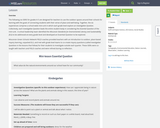
The following six OERS for grades K-5 are designed for teachers to use the outdoor spaces around their schools for learning with the goals of connecting students with their sense of place and well-being. Together, the six experiences comprise a school-wide mini-unit in which each grade level explore an Investigative Question. Collectively, each Investigative Question leads the entire student body in considering the Essential Question of the mini-unit. A school leadership team identified the Wisconsin Standards for Environmental Literacy and Sustainability (ELS) to be addressed at every grade level and developed an Essential Question to be explored.FIELD Edventures educators provided teachers with an introduction to outdoor, place-based inquiry learning, unpacked ELS, and met with grade level teams to co-create inquiry questions (called Investigative Questions in the lessons that follow) for their students to investigate outside each quarter. These OERs were co-taught with teachers and FIELD educators and were refined during co-reflection.

Recording of Feb. 15, 2022 Advancing EL through Culturally-Relevant Text Sets, resources and discussions with participants.

This recording from February 16, 2022 will enable viewers to learn alongside Skylar Primm, advisor and co-lead teacher of High Marq Environmental Charter School, Montello, WI as we explore ways to incorporate phenology studies along with nature journaling for science instruction.
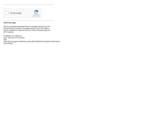
Session 1 Recording of Advancing Environmental Literacy through Culturally Relevant Text Sets. Topics include: Why we need to provide culturally relevant text sets. What is a text? What is a text set? Introduction to the project requirements and use of WISELearn Resource Library.
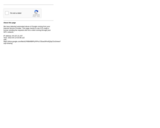
Do you use nature journaling in your instruction? What evidence do students' journal entries provide on what they have learned and where they need to go next in their learning journeys?
In this session, we will: connect with experts and resources on nature journaling; explore practices to give students agency in their learning through self-assessment and peer feedback; and offer ways to improve deliberate practice to grow ideas and approaches.
New resources for nature journaling as well as the How to Teach Nature Journaling book.
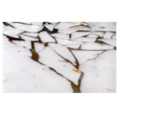
The is the recording of the online collaboration of the BEETLES and Nature Journaling WISELearn Group collaboration on March 2, 2022.
Slight shifts in lesson structures can meaningfully engage learners inequitable and culturally-relevant inquiries. Experience instruction in ways that people really learn and share your ideas for implementation. Come prepared with a nature journal or paper, pencils, and colored pencils as you view and participate in these recorded experiences.
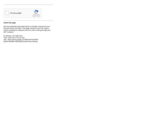
Cynthia Bachhuber, introduces us to the wide range of sources available and delve into how historians use these sources to construct our histories. We’ll explore how archives are created, what it means to use these materials as a critical thinker, and how you can access physical and digital primary sources as an educator. Primary source material may be included as texts as you develop your text sets in this project. Find out how historical resources can support learning in all content areas.
Speaker: Cynthia Bachhuber is a librarian/archivist at the Wisconsin Historical Society where she focuses on outreach & instruction - making history accessible and relevant.
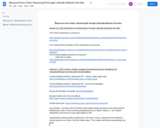
The collaborative online conversations and chats have resulted in document of resources entered into the chats for each of the sessions of Advancing Environmental Literacy through Culturally-Relevant Text Sets.
The document is a work in progress and contributions of group members will be added and revised with on ongoing collaborations.
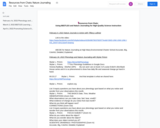
This is a collaborative document of resources recommended by members of the Using BEETLES and Nature Journaling for High Quality Science Instruction. It is compilation of the ongoing chats of the Zoom meetings of the group.
Updates and revisions will occur throughout the collaboration by members of the group.

“Square Foot Gardens: Healthy Spaces for People and Pollinators” is an interdisciplinary unit of study for twenty-four second grade students at Maple Grove Charter School. Part of a year-long science program, the unit complements the second grade EL Education English Language Arts Curriculum in which two Modules (approximately 18 weeks of literacy instruction) focus on the following guiding questions from Modules 3 & 4: “How do plants grow and survive?How do pollinators help plants grow and survive?How do we get the fruits, flowers, and vegetables that we enjoy?How do we become researchers and share our learning?Why should people help pollinators to survive?How can I take action to help pollinators?” (https://eleducation.org )

This text set includes a variety of multimodal resources designed to help learners understand treaty rights as they apply to the state of Wisconsin, giving special emphasis to the court cases of LCO v. Voight and State v. Gurnoe. Indian tribes were independent, sovereign nations, before the arrival of Europeans in North America. Despite ceding their lands in the northern part of Wisconsin to the U.S. government, Chippewa tribes reserved the right to hunt, fish, and gather within the Ceded Territory. In the 1980’s, these court cases affirmed those rights. The year 2024 celebrates 50 years of the court decision.

Please Remix this template for your purposes.